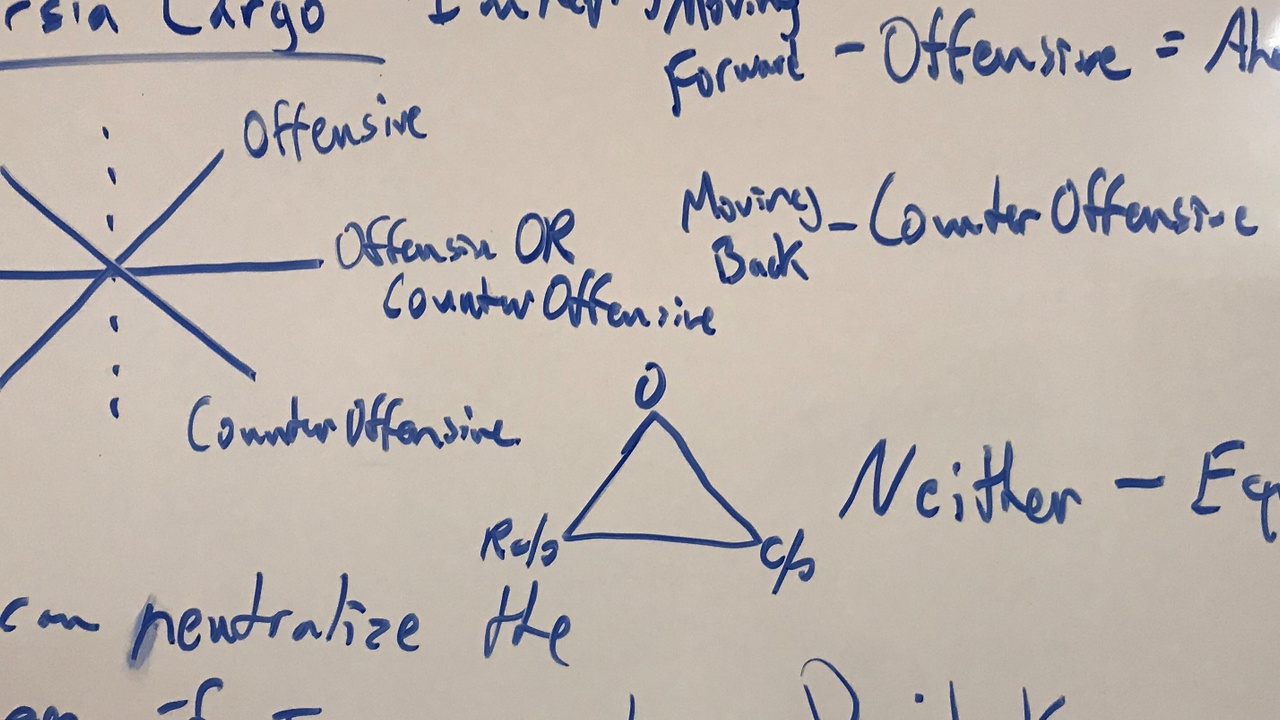Basic, Intermediate, and Advanced Footwork: Understanding Skill Level Proficiencies to Adequately Assess Students

by Dustin B. Denson
The learning, development, and performance of physical skills can easily be classified as basic (beginner), intermediate, and advanced. It could be thought of as a simple rating system. This is nothing new in the arena of education. For example, an analogy could be drawn between Bloom’s Taxonomy and the preceding classification of physical skills as basic, intermediate, and advanced. Martial arts instructors should be acquainted with the differences in how a skill is performed according the levels of proficiency for that skill to adequately assess their students.
Upon learning a new physical skill (or really any skill for that matter) a person’s skill level can be determined by observing how they perform that skill. Someone at the basic level may not be able to repeat movements, when repeated they may not look the same, and they may look awkward. An intermediate learner’s movements, on the other hand, may be more consistent, correctly performed more frequently, combined with other movements, and automatic and successful with concentration; but, there will still be a noticeable difference between when the movement is performed in predictable versus unpredictable situations. Finally, the performance of a skill by someone who is advanced will be automatic, effortless, unconscious (reflexive), capable of adapting to unpredictable and/or unplanned situations to meet that demands of that situation, and capable of focusing on external variables and changes.¹
Footwork in Pekiti-Tirsia Kali is classified in different ways. There is the Foundational Footwork, Combined Application of the Foundation Footwork, and the Advanced and Tactical Footwork. Furthermore, roughly speaking, these classifications could be considered basic, intermediate, and advanced respectively. It isn’t necessary to worry about precise divisions given that the footwork system in its totality is dynamic, there is overlap, application may depend on proficiency level, and the whole of the footwork system is greater than the sum of its parts.
When considering the classification of the footwork as basic, intermediate, and advanced it can be considered from a few perspectives. First, it can be considered as mentioned above in reference to Foundational Footwork, its Combined Application, and the Advanced and Tactical Footwork. Second, it can be considered in reference to an individuals proficiency level (basic, intermediate, advanced) with performing any given piece of footwork. That is, even though the ninety degree sidestep is part of the Foundational Footwork, not everyone will perform it at the same proficiency level (skill level) simply because some people will have been practicing it longer than others and, thus, be more skilled at it. Lastly, and perhaps most importantly, it can be considered from the perspective of its tactical application. Quite simply, the tactical application of some footwork is more basic than other footwork.
An example of this would be the multidirectional footwork, also called the Plus Footwork. It begins with 180 degree turns and stepping and 90 degree turns and stepping. From there the footwork can become more complex as its performance is freed and it is combined with other footwork. The footwork itself is advanced in its tactical application – multiple opponents – since a highly developed since of range and timing would be a prerequisite for its successful tactical execution. However, when simply learning to perform the footwork itself the learner would go through the stages of proficiency skill development as with the learning of any physical skill.
So, the footwork of Pekiti-Tirsia Kali (or any martial art with a dynamic and developed footwork system) can be classified as basic, intermediate, and advanced for various reasons correspondent to the learning objectives and intended purpose. There really is advanced footwork. Pedagogically speaking, when assessing your students, a working understanding of the observable characteristics of skill level proficiencies is indispensable.
- rowan.edu/~rattigan/SeniorSeminar/SkillProfLevels.html, Accessed 2/4/2021

